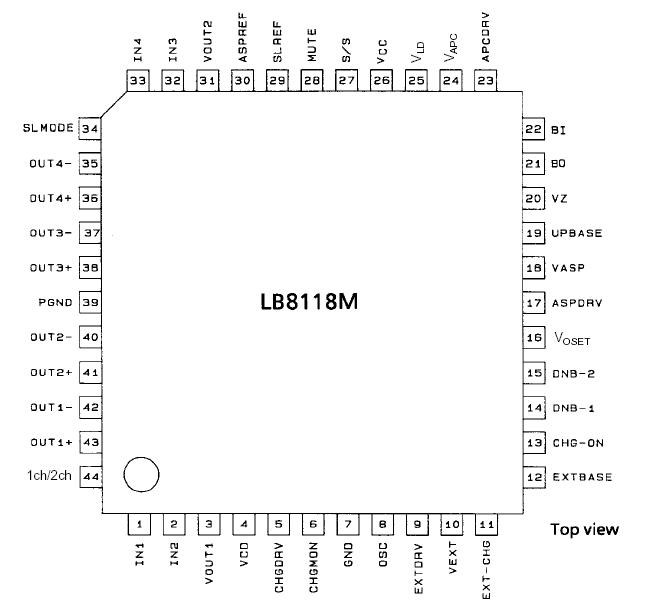LB8115W-NA-TLM, LB8118, LB8118M Selling Leads, Datasheet
MFG:282 Package Cooled:SMD D/C:2330

LB8115W-NA-TLM, LB8118, LB8118M Datasheet download

Part Number: LB8115W-NA-TLM
MFG: 282
Package Cooled: SMD
D/C: 2330


MFG:282 Package Cooled:SMD D/C:2330

LB8115W-NA-TLM, LB8118, LB8118M Datasheet download

MFG: 282
Package Cooled: SMD
D/C: 2330
Want to post a buying lead? If you are not a member yet, please select the specific/related part number first and then fill the quantity and your contact details in the "Request for Quotation Form" on the left, and then click "Send RFQ".Your buying lead can then be posted, and the reliable suppliers will quote via our online message system or other channels soon.
TOP
PDF/DataSheet Download
Datasheet: LB8050
File Size: 95572 KB
Manufacturer: SANYO [Sanyo Semicon Device]
Download : Click here to Download
PDF/DataSheet Download
Datasheet: LB8118M
File Size: 146114 KB
Manufacturer: SANYO [Sanyo Semicon Device]
Download : Click here to Download
PDF/DataSheet Download
Datasheet: LB8118M
File Size: 146114 KB
Manufacturer: SANYO [Sanyo Semicon Device]
Download : Click here to Download
The LB8118M is an actuator driver IC designed for portable CD players that operate at 2.4 V (two Ni-Cd batteries) or 3.0 V (two dry cells). Because the four-channel driver control outputs are divided into two groups, this device reduces power dissipation considerably during double-speed play.
| Parameter | Symbol | Conditions | Ratings | Unit |
| Maximum supply voltage | VCCmax | 7 | V | |
| VCD pin input voltage | VCDmax | 10 | A | |
| H bridge output current | IOUTmax | Maximum per channel is 400 mA. | 800 | A |
| Allowable power dissipation 1 | Pdmax1 | Independent IC | 700 | W |
| Operating temperature | Topr | 20 to +75 | °C | |
| Storage temperature | Tstg | 50 to +150 | °C |
·H bridge drivers (output dynamic range maximum is about 2 V) on chip for four channels to drive each CD actuator (the focus coil, the tracking coil, the spindle motor, and the sled motor).
·Step-up circuit (voltage to be set by an external resistor) on chip that is used to apply voltage to the CD DSP, ASP and microcontroller. Center-tap coil for step-up circuit makes it possible to supply the driver control voltage. (However, the drive Tr, L, C, and Di are all external.)
·Oscillator circuits for each converter on chip. (C is external.)
·Four-channel driver control output is divided into two groups (the focus/tracking group and the spindle/sled group) for minimum loss at double-speed playback. Highest operating voltage detected in each group is supplied for each 2ch H bridge driver after PMW conversion. The single channel PWM drive without dividing the outputs into two groups is also possible. (However, the PWM PNP-Tr, NPN-Tr, L, C, and Di are all external.)
·The dynamic range of 4-channel H bridge driver output voltage is up to 2 V on the focus and tracking side, and can be set by the Vosat pin on the spindle and sled side. However, if the 4-channel H bridge voltages in the H bridge driver block are the same, the maximum voltage is determined using the Voset pin.
·Sled motor driving mode is switchable between step drive mode for lower power dissipation, and normal V-type drive mode. (The other three channels are fixed to V-type.)
·In the spindle motor drive circuit, the control gain can be set higher for double-speed playback.
·PWM step-down circuit for external power operates when external power (4 V or higher) is supplied. In this function, external power is converted to VCC power supply, and two type voltage setting is possible. In playback mode, step-up voltage for DSP has to be set equal to or lower than VCC, but in charging the battery, it has to be set higher enough than VCC. So step-down voltage (VCC) setting of two types is possible with two pairs of external resistor. (Switching port is provided.) (However, the PWM PNP-Tr, NPN-Tr, L, C, and Di are all external.)
·APC step-up power supply for the laser diode. (Also supports a pre-power supply for the internal bias.) The laser diode is controlled with a voltage of roughly 0.5 V.
·Battery pulse charging function on chip. (However, the drive NPN-Tr, and the current feedback C and R are external.)
·Battery check comparator on chip.
·The system can be started up and stopped by outputs from the microcontroller.
·Actuator muting function on chip (for all four channels simultaneously).
·Thermal shutdown circuit on chip.

